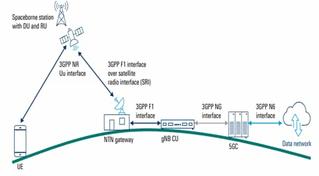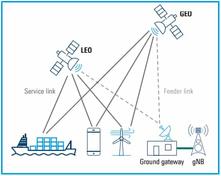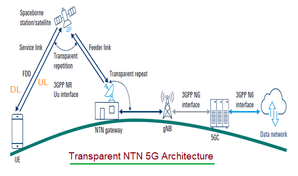Difference Between 5G NR and IoT NTN
Advertisement
Introduction : Non-Terrestrial Networks (NTN) are becoming a crucial extension of 3GPP standards, enabling seamless connectivity through satellites and high altitude platforms. Among the key NTN categories are NR-NTN, which extends 5G New Radio for high performance broadband and mission critical applications, and IoT NTN, which brings NB-IoT and eMTC technologies to space for massive low power IoT deployments. Both are standardized in 3GPP Rel-17 and beyond.
5G NR NTN
- It refers to extending 5G NR (New Radio) technologies to satellites and high-altitude platforms (HAPS).
- Designed for high performance broadband services, supporting enhanced Mobile Broadband (eMBB), Ultra Reliable Low Latency Communication (URLLC), and massive Machine Type Communication (mMTC) use cases.
- Supports higher frequencies (FR1, FR2), wide bandwidths and advanced beamforming.
- Targeted at applications like satellite based 5G coverage, backhaul and direct to device (D2D) connectivity (including smartphones).
IoT NTN
- It refers to extending NB-IoT (Narrowband IoT) and eMTC (enhanced Machine Type Communication) standards over satellites/HAPS.
- Focused on low power, low data rate IoT devices with long battery life (up to 10 + years).
- Optimized for massive IoT use cases such as smart meters, asset tracking, environmental monitoring and agriculture.
- Designed for narrowband operation, lower complexity devices and tolerance to higher latency.
Key differences
| Feature | NR-NTN | IoT-NTN |
|---|---|---|
| Underlying technology | 5G NR (New Radio) | NB-IoT and eMTC |
| Data Rate | High (in Mbps to Gbps) | Low (in bps to Kbps) |
| Device complexity | Higher as smartphones and advanced modems are required. | very Low as sensors or trackers are used in IoT |
| Power consumption | Higher, requires more power | Ultra-low power, optimized for long battery life |
| Spectrum | Broad bandwidths (FR1 & FR2) | Narrowband spectrum (200 KHz for NB-IoT, ~1.4 MHz for eMTC) |
| Target Use Cases | Broadband internet, voice, URLLC, mMTC, Backhaul | Massive IoT, Low Power Wide Area (LPWA) applications |
Conclusion: While both NR-NTN and IoT-NTN leverage satellite and non-terrestrial platforms, they serve very different purposes; one focuses on delivering high speed broadband and advanced 5G services, while the other ensures energy efficient, large scale IoT connectivity. Together, they complement each other by addressing diverse requirements ranging from real time communications to massive sensor networks, paving the way for a fully connected world where terrestrial and non terrestrial networks operate seamlessly.
Reference :
Advertisement
 RF
RF

